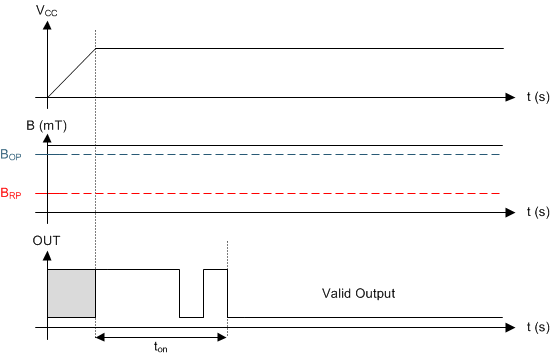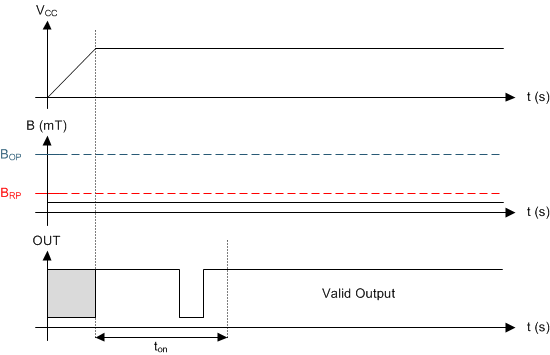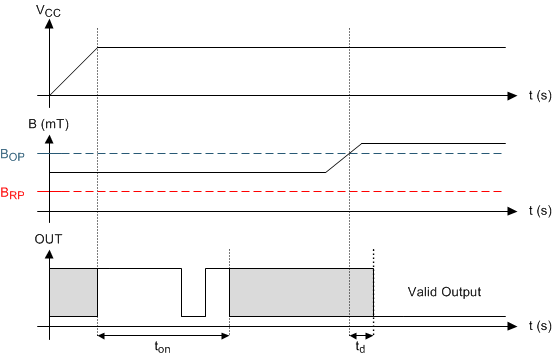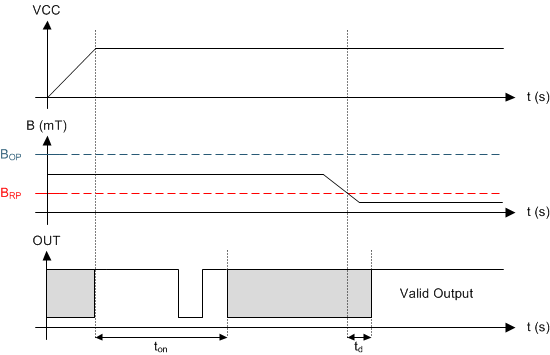JAJSNV0A December 2022 – February 2023 TMAG5115
PRODUCTION DATA
8.3.3 Power-On Time
After applying VCC to the TMAG5115, ton must elapse before the OUT pin is valid. During the power-up sequence, the output is Hi-Z. A pulse as shown in Figure 8-3 and Figure 8-4 occurs at the end of ton. This pulse can allow the host processor to determine when the TMAG5115 output is valid after start-up. In Case 1 (Figure 8-3) and Case 2 (Figure 8-4), the output is defined assuming a constant magnetic field B > BOP and B < BRP.
 Figure 8-3 Case 1: Power On When B >
BOP
Figure 8-3 Case 1: Power On When B >
BOP Figure 8-4 Case 2: Power On When B <
BRP
Figure 8-4 Case 2: Power On When B <
BRPIf the device is powered on with the magnetic field strength BRP < B < BOP, then the device output is indeterminate and can either be Hi-Z or pulled low. During the power-up sequence, the output is held Hi-Z until ton has elapsed. At the end of ton, a pulse is given on the OUT pin to indicate that ton has elapsed. After ton, if the magnetic field changes such that BOP < B, the output is released. Case 3 (Figure 8-5) and Case 4 (Figure 8-6) show examples of this behavior.
 Figure 8-5 Case 3: Power On When
BRP < B < BOP, Followed by B >
BOP
Figure 8-5 Case 3: Power On When
BRP < B < BOP, Followed by B >
BOP Figure 8-6 Case 4: Power On When
BRP < B < BOP, Followed by B <
BRP
Figure 8-6 Case 4: Power On When
BRP < B < BOP, Followed by B <
BRP